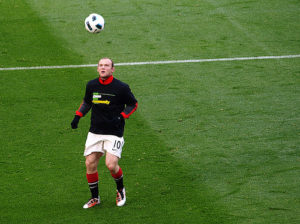Football strategies in today’s game are very intricate. Various concepts and approaches to the game have developed and expanded in recent decades. Therefore, there has been a tremendous shift in the traditional positions seen on a football pitch. Striking a good balance between defence, midfield, and offence is crucial in modern games. Sweeper is a position that has played a significant impact in shaping football formations and tactics throughout the years. In this article, we’ll define the job, trace its origins, and go over the essential qualities required to excel in it.
What is the sweeper Football position?
A sweeper is a football defender who sits just behind the defensive line and is responsible for collecting and handling any balls that enter that area. No matter the system in place, the sweeper position—also called a libero, meaning “free” in Italian—is vital to the defense’s core function. These players often possess exceptional intelligence, natural leadership abilities, and the freedom to play wherever on the pitch.
The football sweeper’s role is twofold: first, to offer vital support to other defensive players; second, to make it harder for opponents to mark them. This is achieved by diving in behind the defensive line. In addition to launching their own attacks and skillfully distributing the ball across the pitch, the sweeper may frequently double as a playmaker in the defensive third. In this situation, the extra room they can discover in the Football field’s deeper areas can be particularly useful.
Where did the sweeper role come from?
Originating in the 1930s, the sweeper position went on to play a significant role in European football throughout the twentieth century. Karl Rappan, an Austrian coach, was an incredibly successful ‘verrou’ for the Swiss national team and the Swiss club Servette throughout the 1930s and 1940s. A deeper centre defender who could move freely to mop up danger would be a feature of his sides. Italian coach Nereo Rocco was also putting these same principles into play with Triestina during this period.
Ivano Blason, perhaps the first renowned libero in the world, was shaped here by him. After achieving enormous success with the Italian powerhouse AC Milan, Rocco—widely regarded as one of the best managers of all time—carried over similar tactical concepts. The Italian word for the sweeper position, catenaccio (meaning “the chain”), was coined during his lengthy reign over the game.
Helenio Herrera is another important figure in the evolution of the sweeper job. While managing Inter, Milan’s other major team, the Argentine-French manager enjoyed some success. In this situation, his teams’ play relied heavily on the catenaccio role.
The half-back, a primitive form of the modern central defensive midfielder, would normally drop into the deep defensive space to pick up danger in the early days of the sweeper role. But over the years, different types of players have been more commonly linked to this position. The position of the football sweeper has evolved and changed throughout the years in many different countries; the finest examples of this may be found in the section about the greatest sweepers of all time.
The key traits of a sweeper in Football
1. Game reading
The capacity to accurately forecast the ball’s final destination and promptly intervene to alter its trajectory is, arguably, the most important requirement of this role. As a football sweeper, you must be able to detect danger in this manner, which frequently entails anticipating that your colleagues will make a mistake.
2. Timing
In order to gain control of the ball, you must not only anticipate an unfortunate event but also act swiftly to capitalise on it. Precise timing and accurate judgement are essential. When you’re your opponent’s last line of defence, this becomes even more important because a slip-up or foul puts them in a very precarious position.
3. Tackling
Although the football sweeper’s primary responsibility is to pick up loose balls in open areas, strong tackling abilities are also required. If a sweeper defender is the type to release players into the middle of the field, they must have excellent ball-winning skills.
4. Communication
An additional critical component of this position is the ability to communicate well with teammates on the defensive line. Since you aren’t technically on the back line, you run the danger of obstructing the path of the players around you if your communication skills aren’t up to snuff.
5. Passing
The importance of passing inside the sweeper position should be emphasised in any in-depth exploration of the position. In football, a sweeper must be adept at completing a variety of passes, including short ones to teammates or another sweeper keeper who is rushing off his line to win the ball, and long ones to players in the middle of the field, on the wings, or up front. An excellent approach for a libero to initiate an attack is to spray the ball into space from a deep position.
The evolution of positions
The sweeper position has been less common since the 1990s, when 4-2-3-1, 4-3-3, and 4-4-2 became the most common formations. In most teams, a central defensive midfielder will drop deep to collect and distribute the ball, or a conventional center-back will perform the heavy lifting. One sign of a larger change in the way the game is played at the top level is the gradual elimination of the sweeper position. Nobody can say for sure what the future holds as the sport of football evolves and expands around the globe. Perhaps goalkeepers will soon be expected to play more like a defensive line due to the increasing importance of ball abilities.
Conclusion
There has been a meteoric rise in the prominence of centre backs as offensive weapons and playmakers for their teams in the last several decades. However, the ‘Sweeper’ is far from extinct; in fact, it has become increasingly integrated with the function of the Ball-Playing Centre-Half. Every squad needs a well-rounded defence, and that can sometimes mean starting a quick, positionally-aware player who can cover a lot of territory at the back. The conventional meaning of “Sweeper” may fade into oblivion as “Sweeper Keepers” gain more and more notoriety.






